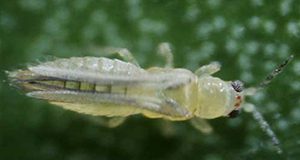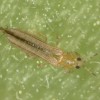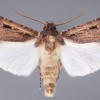Among the 5,500 (or more) well-described species of thrips worldwide, nearly 1% are known as economically important pests. Because these tiny pests can feed on multiple plants, their damage potential to nursery and greenhouse production is immense: thrips inflict millions of dollars loss every year. Thrips hide easily in tiny spaces, reproduce rapidly, and can survive in lots of climates. And they are invisibly small! Thrips infestations present a huge problem in the regional and international trade of plant materials and products, due to the quarantine risks and damage associated with several species in the order.
This 7-page fact sheet written by Vivek Kumar, Garima Kakkar, Cristi Palmer, Cindy L. McKenzie, and Lance S. Osborne and published by the UF Department of Entomology and Nematology presents a program to manage important thrips pests, including western flower thrips (Frankliniella occidentalis), chilli thrips (Scirtothrips dorsalis), weeping fig thrips (Gynaikothrips uzeli), gladiolus thrips (Thrips simplex), and privet thrips (Dendrothrips ornatus) known to damage several horticultural crops of economic importance in the United States. The publication will help growers take appropriate measures to minimize economic damage.
http://edis.ifas.ufl.edu/in1145


